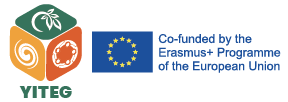Tool Description
Theory of Change (ToC) is a specific type of methodology for planning, participation, and evaluation that is used in companies, philanthropy, not-for-profit and government sectors to promote social change. Theory of Change defines long-term goals and then maps backward to identify necessary preconditions.
The ultimate success of any Theory of Change lies in its ability to demonstrate progress on the achievement of outcomes. Evidence of success confirms the theory and indicates that the initiative is effective.
The workshop describes step by step the path to build a Theory of Change within an organization, allowing even non-experts to use this methodology.
The ToC process starts from the ideal point of arrival, with the identification of the long-term impact objective, then proceeding backwards to recognize all the necessary preconditions that must be in place and how they relate in a causal perspective “If-then”.
We present here a summarized version of the workshop in English. The full version and more reading materials are available in Italian.
1- LONG-TERM IMPACT IDENTIFICATION
Ask each participant to write down the ideas that describe their vision of “success”, normally there is a generic definition. Circumscribe the definition with: target population “-” geographical and temporal scope “-” current status “-” threshold level “. An impactful goal must be simple, clear and specific. A practical way to help with the formulation is to ask yourself, “If a local newspaper were to write a headline announcing the success of the project, what would it say?” The group can see to what extent the definition of success they have reached is suitable for use as a newspaper headline.
2- BACKWARD MAPPING
The purpose of this phase is to identify backwards all the necessary preconditions (outcomes) to produce the impact objective, mapping them into a pathway of change that proceeds in a linear and chronological manner.
- Brainstorming. Ask each participant to write down the necessary and sufficient preconditions to produce the final result. It is important to remind the group that at this moment the focus is on the final outcomes, that is, those directly related to the impact objective.
- Sharing. Stick the post-its on the board. The facilitator should group the most similar outcomes.
- Comparison and processing. The facilitator should help the group to narrow the focus on four to six shared final outcomes that will be placed directly under the impact goal and linked to it through arrows.
At this point the procedure is repeated, taking another step back: for each final outcome identified, the facilitator will ask the group to determine the necessary preconditions to produce it (intermediate outcomes).
The activity will be repeated for each intermediate outcome identified, asking participants to identify the so-called early outcomes.
Once the group has reached agreement on the pre-conditions necessary to generate the impact objective, it is advisable to reorder the outcome map with the correct causal lines, so that the reference model for the subsequent work phases is clear and understandable to all.
3- REALITY CHECK
Once the mapping of the outcomes is complete, the workshop participants will have realized that their efforts and resources are not sufficient to produce all the preconditions identified. At this point the facilitator assists the group in carrying out the so-called “reality check” which consists in considering the mapped outcomes by dividing them into:
- outcomes that the organization will produce directly
- outcome on which the organization intends to take action at a later time
- outcomes that will be achieved by other players active in the reference context
METHOD:
- What outcomes the organization is likely to produce?
- Which outcomes are most aligned with the experience, skills, focus of the organization?
- What outcomes can be produced by third parties?
Normally at this stage, participants can work in a single group to map the organizations active in specific areas of interest. At this point, a moment of individual reflection may be appropriate to bring out existing collaborations, possible synergies and, hopefully, opportunities for contact that the participants could facilitate.
In this way, thanks to context analysis and mapping of outcomes, the organization will be able to define lines of collaboration with external parties who contribute to the impact model, “outsourcing” the outcomes on which it does not have strong expertise to specialized players.
4- DEFINITION OF ACTIVITIES:
METHOD:
- What type of intervention is needed to produce the outcome?
- What activities that we already implement can produce the outcome?
- What actions are needed to initiate the partnerships we need to produce specific outcomes?
In this phase, the role of the facilitator is generally limited: normally it is advisable to subdivide the group, assigning one or two outcomes from the map to sub-groups or individuals, and asking them to define the activities that can produce them.
Subsequently, each subgroup reports to all participants to arrive at an alignment – attaching post-its with the planned interventions under each benchmark outcome.
5- INDICATORS
To make the ToC operational, the group must arrive at the definition of the indicators, combining quantitative and qualitative metrics.
METHOD
Ideally, each outcome in the ToC should carry an indicator and for each the participants should answer the following questions:
- On whom will the impact occur?
- How much will the beneficiaries change?
- When will the change occur?
This is a challenging and time-consuming phase: it is advisable to focus only on some main outcomes during the session with the complete group, explaining that the work will be completed later by the facilitator in alignment with a small team (which must surely understand the contact person for monitoring and evaluation of the organization).
It is advisable to project / show the definitions of the fundamental terms (indicator, target population, threshold, etc.), dividing the participants into subgroups that will be in charge of specific elements. It is likely that not everyone will be able to make a valuable contribution in this phase, but it is important to stimulate participation to foster the growth of an evidence-based organizational culture and to compare staff members, traditionally focused on different professional areas, on mutual needs ( e.g. monitoring contact person, field staff, communication area, etc.).
6- VERIFICATION OF ASSUMPTIONS
Once the group has arrived at the definition of the elements of the ToC, one of the last – but decisive – steps to be taken concerns the verification of those conditions limitedly under the control of the organization. The goal is to detect the assumptions underlying the prefigured ToC that can determine the success or failure of the model, including internal or external facilitators (enablers) in the reflection and providing, where possible, adequate counter-moves.
METHOD:
To start the process, the facilitator can walk through the ToC, this time proceeding “forward” – starting from the activities to arrive at the impact goal – and dwelling on each causal step to ask the group questions such as:
- What factors ensure the success of this step?
- What evidence do we have of this passage? Is there established evidence or is specific research necessary?
- Which internal or external players can create added value in this phase? Which ones can hinder the achievement of this result? How can we get them involved?
Aims
The workshop helps social workers to apply the Theory of Change and evaluate Social Impact in their organizations.
Duration
3 hours minimum
Background and where it has been employed
This tool was developed from a series of descriptions of the Theory of Change. it was used in some social cooperatives in Turin to internally develop a verification process on some new projects.
Material needed
Billboards, markers, post it notes. A group of people involved in the project to be examined, made up of leaders, educators, beneficiaries, stakeholders, etc.
Links and downloads
- Theory of Change for dummies! A video in English
- Theory of Change using a canva from DoItYourself Toolkit project: explanatory video
- The full workshop description – in italian
- Introductory guide to Theory of Change for international cooperation – In Italian only
- Introduction to Theory of Change as leadership tool with community focus, by the Hubert Project – in English.
Created by
Fondazione Lang Italia

